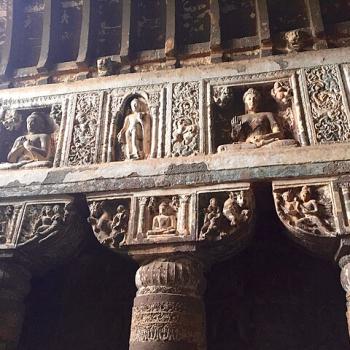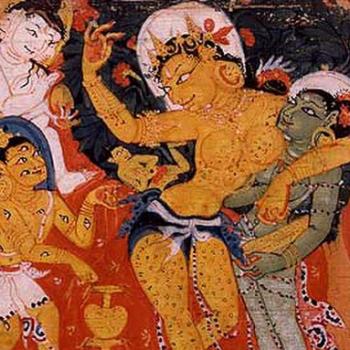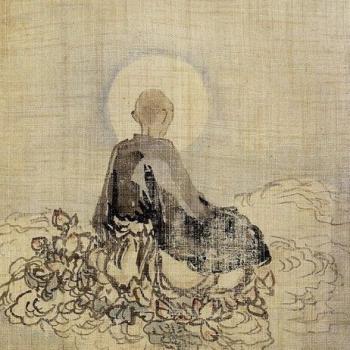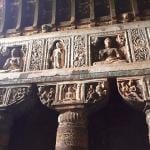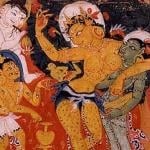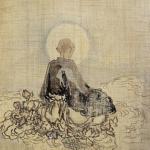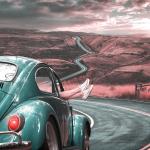A Meditation On Liberal Religion and a Call to an Ecological Consciousness
James Ishmael Ford
13 November 2011
First Unitarian Church
Providence, Rhode Island
Text
Yunyan asked Daowu, “How does the Bodhisattva Guanyin use those many hands and eyes?” Daowu answered, “It is like someone in the middle of the night reaching behind her head for the pillow.” Yunyan said, “I understand.” Daowu asked, “How do you understand it?” Yunyan said, “All over the body are hands and eyes.” Daowu said, “That is very well expressed, but it is only eight-tenths of the answer.” Yunyan said, “How would you say it, elder brother?” Daowu said, “Throughout the body are hands and eyes.”
Blue Cliff Record, Case 89
Translated by Joan Sutherland and John Tarrant
Right wing entertainer and social provocateur Rush Limbaugh has declared with pontifical certainty that “global warming is a religion.” Now, this is a rhetorical flourish on the part of someone who is simply trying to win an argument and is short on the facts. But he’s playing to a perspective common among us. It is an article of faith among some on the American political right that science and in particular evolutionary science is a religion. Adding in the various disciplines calling us to attend to global climate change and our human hand in it has been a simple additional step.
Truthfully, this antipathy to science, particularly evolutionary science, extends beyond political party. In his forthcoming book from Princeton University Press, The Unpredictable Species, our own Philip Lieberman notes how some “forty percent of Americans and twenty-five percent of Britons say they… don’t ‘believe’ in evolution.” Looking at the surveys, Phil observes how, “The word ‘believe’ is significant because a statement affirming belief may be relevant if the question concerns the Virgin Birth or the Tibetan deity Mahakala, but the acceptance of the theory of gravity rests on whether it correctly predicts observable events.” The same is true for evolutionary science as well as for global warming. Observing and predicting and with that the possibility of falsification are the hallmarks of science.
Religions are the repositories of many things, including traditional origin stories and other folk wisdoms that along the line make statements about reality. Confronted with contradictions generated frankly, simply as side effects to the work of science, have brought out the worst in many believers of many received religions.
But, here’s the deal. As, Philip K. Dick famously observed, “Reality is that which, when you stop believing in it, doesn’t go away.” For a long time the ever-refining processes of scientific method have opened us to ways of seeing often at odds with the religions we’ve inherited. No wonder people who find value in rationality often have such difficulties with these revealed religions.
But, while I do believe in several ways all religions are false, I also believe they are repositories of ancient truths. The problem is sorting out wheat and chaff. In my opinion the critical work of religion is fostering the quest for meaning. This world we live in is filled with hurt and violence and every imaginable cruelty. It breaks the heart. This world is also so astonishingly beautiful and precious and run through with the mysteries of love and compassion, that it can take our breath away. This strange mix is what we actually encounter in the world. The work of religion is squaring the circle, finding our place in the great mess.
So, a question: Is there a way through for those of us who are happy to step away from stories that don’t work, however sanctified they may have been by one religion or another? Is it possible for us to work only with those parts of the traditional stories, or even completely other stories that more closely resonate with those things that don’t go away when we cease believing in them? Are there heartful ways of standing in this world that are not in contradiction to the findings of reason and observation and, testing? Is there a living religion, an authentic spirituality, a liberal religion for us?
I say, from the bottom of my heart, the answer is yes. And so, with that preface, here’s an invitation to a brief exploration. Let’s return to that story we used as our text today. It’s an anecdote collected in two twelfth century Chinese anthologies of spiritual guidance, as chapter eighty-nine of the Blue Cliff Record and as chapter fifty-four of the Book of Serenity.
The matter turns on a conversation between two brothers who will both become renowned masters of the Zen way. They studied and taught between the end of the eighth and through the first half of the ninth centuries, if you know them, difficult times, in which they found the wisdom to live full lives. There are numerous stories about these teachers of the way of liberation, individually and together. I count both Yunyan and Daowu, although particularly Yunyan among my guides.
In this anecdote, the younger, Yunyan asks his brother who has already walked the way a great distance, “Why is it the Bodhisattva Guanyin (the archetype of compassion, of caring in this world, of love manifest) has so many hands and eyes?” His brother Daowu responded, “It is like someone sleeping, in the night, reaching behind her head for her pillow.” To these words Yunyan said, “I understand.” When asked what precisely was his understanding he answered, “Our bodies are covered with eyes and hands.” Daowu replied, “Almost. You’re eight tenths of the way.” Then, when asked what is the more complete response, was told, “There are only eyes and hands.”
I think this conversation opens doors we all may walk through, if we are willing to let go of our beliefs, and instead, open both our minds and our hearts. Discarding certainty and embracing curiosity as our fundamental stance in life, we can walk into the fields of the real.
Of course, what is this real? What is it that when we cease to believe in it, remains? And, in particular, when we’re concerned with the matters of heart, of meaning and purpose, and direction in a world that seems to have precious little of these qualities, what happens when we open ourselves as widely as we can? And yes, everything is mediated. I am here to witness: nonetheless, what we have is enough. We can know what we need to in order to find our place in the great circle of things. I am here to witness to these possibilities.
Let me tell you two stories a bit more recent than that of Yunyan and Daowu. I’ve told them before. But in their coming together, I’ve found something near to the core of my life and to what I think we need to be willing to open our hearts to, if we really, really wish to understand what the world’s mysterious workings look like, and our place as part of it, and from that, how we can act with some grace upon this terrible and beautiful world.
First there’s the story of the nineteenth century Hindu saint, Ramakrishna, a priest of the goddess Kali. I read it when I was fifteen, maybe sixteen. Until I’d discovered Ramakrishna through the writings of Aldous Huxley and Christopher Isherwood and their associates, my idea of what gods looked like was informed by my conservative Baptist upbringing modified by my father’s bare and perhaps reductionist atheism. Anyway, Ramakrishna prayed constantly for a vision of his goddess, Kali, the Divine Mother. He wanted to know her as she was, desperately. I personally understood this prayer. It was my own longing from some aching place in the pit of my being, to know whether God was true, was real. I never got that response to my prayers.
But his were answered. One day unbidden, she came to him. In a vision as he watched she arose out of a river and walked toward him. As she walked the goddess swelled out in pregnancy, gave birth and then ate her child. Witnessing this he slipped into a fever of ecstasy. As a young man, really, still a boy, I was shocked that this would be a turning point in this revered saint’s life. It seemed so awful. But, I filed it away, never completely forgetting it.
Then, some years later, after I’d left the Buddhist monastery I’d been living in, I went to Oregon to visit my brother. He lived in a rural area, and I found myself at the edge of a genuine wilderness, sitting beside a creek in the shade. I can still taste the air from that day; I can smell the warmth and the vegetation. At the very same time the area was deeply silent and abuzz with life. Then in the midst of it all something caught my attention. On a sunny spot on a good-sized rock in the middle of the creek I watched as a large fat toad, hopped up, settled down, and sunned itself. All was right with the universe.
What I didn’t notice until just as it struck was the snake. My heart leapt into my throat, I was frozen to the spot as I witnessed it all happen. In a bloody moment snake and frog fell behind the rock out of sight. Minutes later the snake slithered up onto the rock in the same place, with a large swelling in its middle, and lazed in the same sunny spot.
In another unbidden moment, I recalled Kali and Ramakrishna and that horrific, and now somehow for me, personally, deeply beautiful vision. I felt my heart grabbed like that snake grabbed the frog. And, more important, most important: I felt myself swallowed whole by the goddess of life and of death. I realized sitting there in the shade witnessing it all, that I, too, was swallowed by the world itself.
The intense moment passed. As all things do. But, something lingered, a subtle shift in my being that has never quite left me. In fact, it redirected my spiritual path, it led me on a quest to understand what all this, life and death taken together might possibly actually mean. The path for me was one of not turning away, of being open to the whole of it, of allowing my heart to break, and my mind to search. Lots of sitting down, shutting up, and paying attention, almost certainly helped, as well. It was a path of presence. It is.
What I found was that the world and I are both separate and one. We are, in the last analysis woven out of each other, created and creating. The world is a mysterious dance of energy or matter, call it what you will, the stuff of our being, what we all are. Realizing our deepest intimacy, my deepest intimacy with you and the world, has opened a way of life that is at one deeply satisfying, and constantly challenging: How do I act within this circle of life and of death? With knowing comes responsibility.
A while later I came to understand the way people often describe this stance in the world that was becoming my place was called pantheism. The word was coined by an eighteenth century writer John Toland in an essay about the philosopher Spinoza and brings together two Greek words meaning “all” and “god.” All and everything is the divine. What precisely this means seems to be up for grabs. There are those who think that the universe is a spiritual substance, sometimes it is said that everything is mind, usually with a capital “M,” Mind. Another view is essentially dualistic, with matter and spirit intertwined in some mysterious way.
But the kind of pantheism that has caught my heart, and imagination, and which I think lies very much at the heart of what we’re about in this Meeting House, is sometimes called naturalistic Pantheism, where there is one substance that makes up the world. It is the pantheism of Spinoza and Toland and before them of the Greek Stoics and, I would suggest, of Taoists, at least the so-called philosophic Taoists like the author of the Tao Te Ching and Chuang-tzu. We see it in many forms of Buddhism, particularly Zen. This perspective is also the baseline spiritual stance of many Transcendentalists, Emerson and particularly Thoreau, come immediately to mind.
I have friends who want it both ways and say all is divine, and God has an additional existence beyond the material world. Personally I see no need for such an extra. Just this, just this. Swallowed by that snake, I find what is here is more than enough for me. Now others, sometimes critics, sometimes not, have suggested this is actually nothing more than poetic atheism, or, as Richard Dawkins’ suggested, “sexed-up atheism.” Near as I can tell Dawkins said that with admiration.
Whatever, there are many people who are afraid of this opening of the heart to what is. Google pantheism. It can be eye opening. Now, among the cries of fear and hatred from those in the unenviable position of defending revelations that contradict what we can see with our own eyes, there are legitimate questions and challenges.
Foremost among them, is, so what do you do in this world of hurt? One of the more offensive anecdotes I can recall was the story of Minamata, a Japanese city that was poisoned by mercury dumping into the town’s bay. The event claimed over two thousand victims, most tragically many children born with horrific birth defects. When, belatedly, the corporation that committed these horrible acts was brought to justice, one of their central defenses was claiming how they and what they did was all simply part of the natural order of things. We’re all one, so what’s the problem? This argument did not hold water in the Japanese courts, and it shouldn’t hold water with those of us who see we are in fact all one.
Now, the “problem of evil,” the concern with evil writ large in a world created by an omniscient and benevolent deity is a problem for those who believe in such a deity. For those who see how we are individuals completely interdependent with the world, there is no place for a cosmic evil, no devil conspiring against us. Rather evil is as evil does. The ethic of a religion of unity is very much found in how we relate to each other and to this world, our mother.
For reasons I don’t understand its pretty obvious we, as human beings, have a deep visceral need for each other, for nurture, for language, for survival. And, as individuals we look out for ourselves, and can cheat. I think these twin realities generate creativity and offer possibility in a world that might otherwise remain static. The problems arise when either our need for each other or our looking out for ourselves gets out of hand, out of balance.
As the creatures walking on this planet who can see what’s going on, can observe, and test, and reflect, we find that comes with responsibilities. It matters how we treat each other. And it matters how we treat the world and everything in it. Human beings were born to care, for ourselves, for each other, for the world. It is who we are. It is what we do.
I call this realization our ecological consciousness. It is the knowing from the pit of our being that we, you and I are Guanyin. And what does that look like? Well, it becomes like someone sleeping, in the night, reaching behind her head for her pillow. We allow ourselves to be swallowed by the snake and we discover we are the goddess, that we really are the body of compassion. Your eyes, your hands, my eyes, my hands, our eyes, our hands are the body of God.
The body of the world.
Find this as your personal knowing, and you will know what needs to be done.
It’s that simple. It’s that hard.
Amen.




